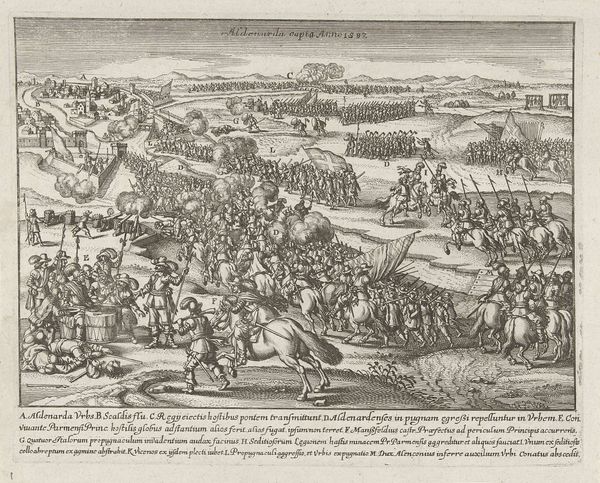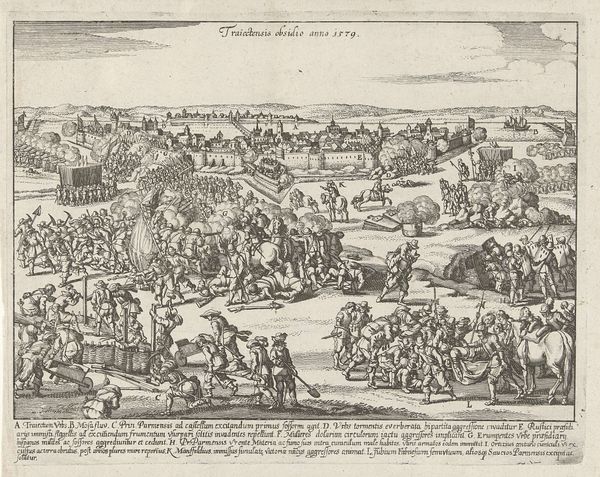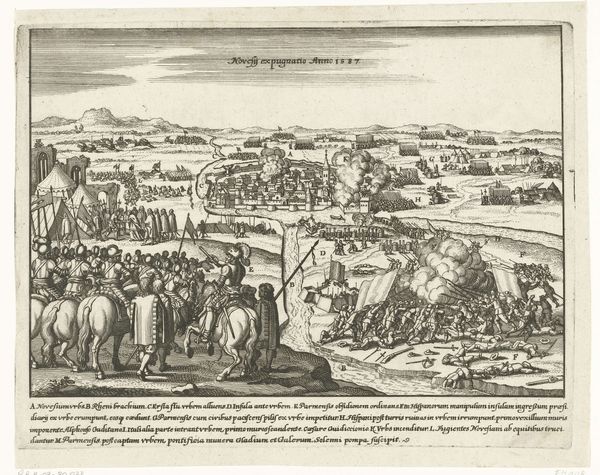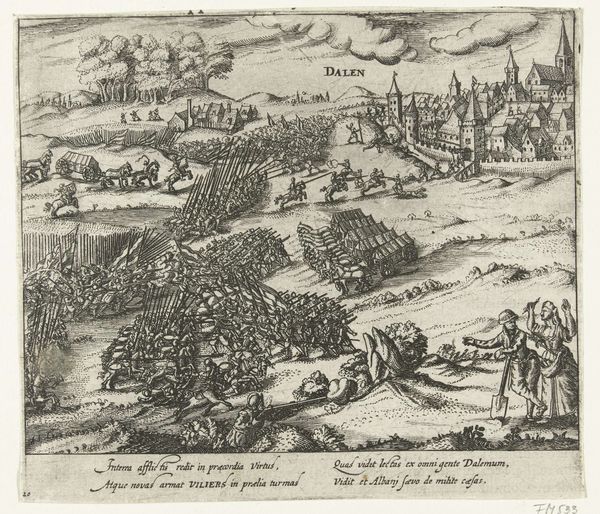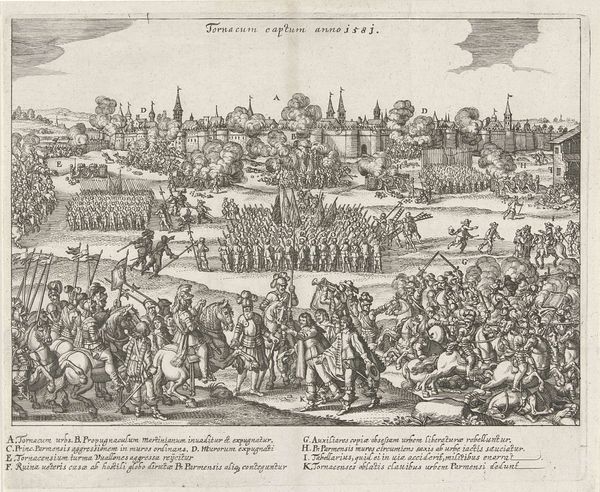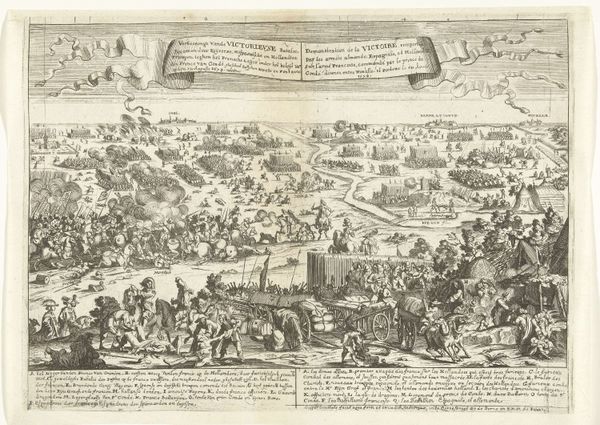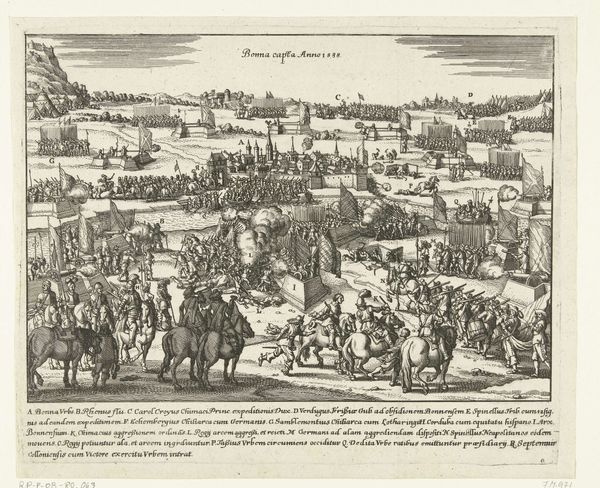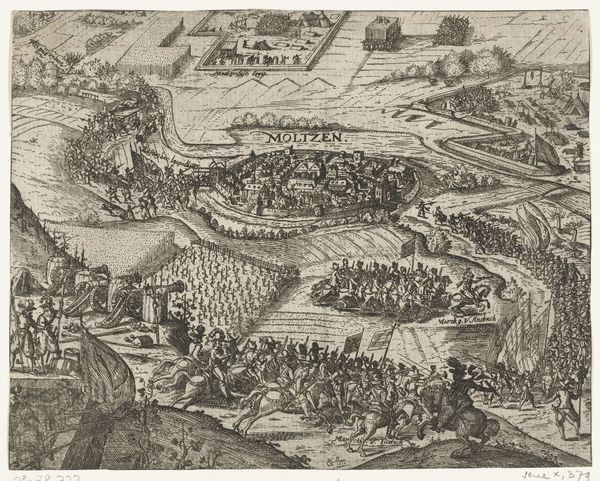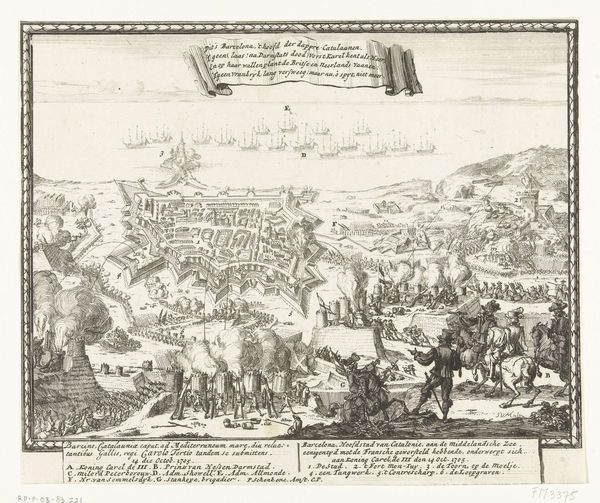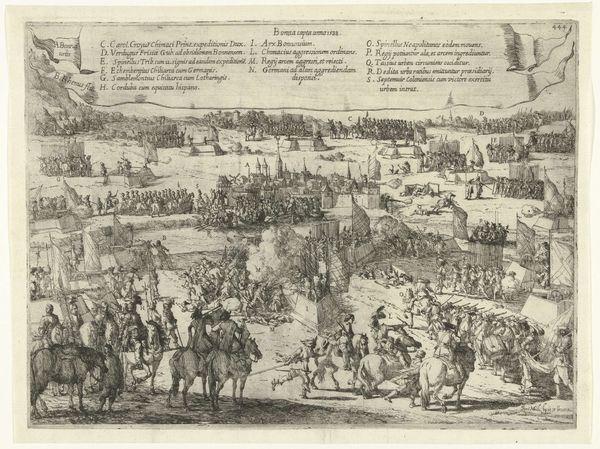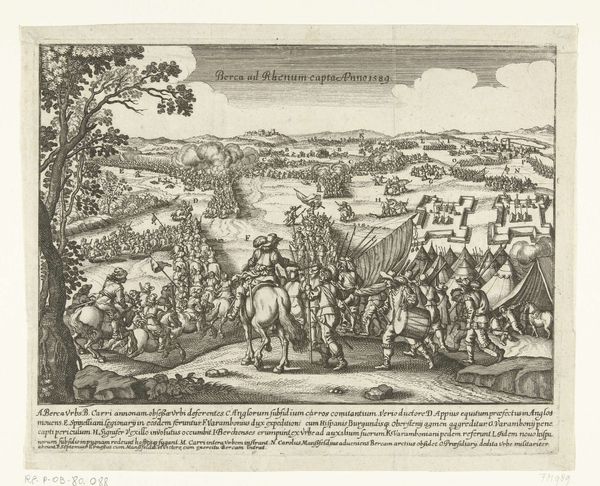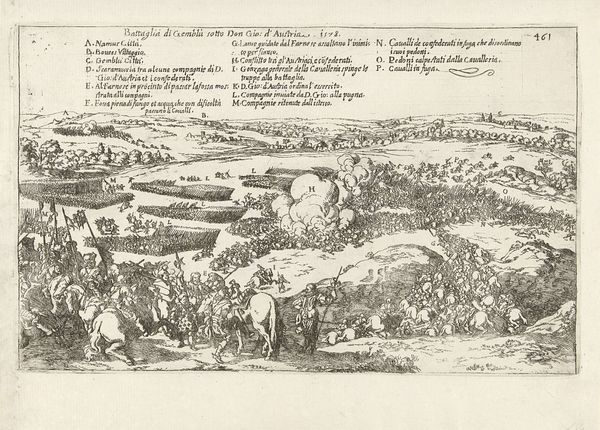
print, etching, engraving
#
narrative-art
#
baroque
# print
#
etching
#
landscape
#
figuration
#
history-painting
#
engraving
Dimensions: height 217 mm, width 275 mm
Copyright: Rijks Museum: Open Domain
Curator: Here we have an engraving, "Slag bij Ingelmunster, 1580," dating from 1649 to 1651. The artist, unfortunately, is anonymous. It depicts a chaotic battle scene. Editor: Chaotic is the word! It's almost dizzying—so many tiny figures, so much activity packed into this monochromatic field. You're immediately plunged into the heart of the conflict, aren't you? I feel anxious looking at it! Curator: It certainly conveys the tumult of battle. Consider the density of figures, the puffs of smoke representing gunfire. There is a definite intent to convey a detailed record of the events— the visual information seems comprehensive. It gives you almost a bird’s eye view, though situated more at eye-level, closer to the front line. Editor: I notice, even amid the chaos, there’s an order. The artist creates these receding planes that provide a kind of structure to the scene. But it's that tiny watchtower-like structure in the foreground that really grabs me; a fragile symbol amid all this warfare. It feels vulnerable, which perhaps is intentional. Curator: It is a very poignant observation. These symbolic buildings underscore power and dominion and would absolutely communicate those concepts to viewers of the time. You see this especially in Baroque art; power communicated through architectural images. What about the lettering in the sky area? Editor: I do notice it! That, along with the lengthy description underneath, seems almost to ‘narrativize’ this as history more than 'art,' per se, wouldn’t you say? A visual record carefully labelled... the equivalent of a modern day news infographic, maybe? Curator: In a way, yes. The text, combined with the image, really works to solidify its purpose: not merely as aesthetic viewing, but as historical documentation, serving almost like propaganda by solidifying a particular viewpoint and its resonance over time. Editor: I’m left thinking about how we process historical narratives, the selective viewpoints and artistic choices that embed into our understanding. It feels like more than just a record of a battle; it's an attempt to shape its legacy. Curator: Indeed, visual imagery such as that presented in "Slag bij Ingelmunster" powerfully molds our perceptions and remembrances of significant past events.
Comments
No comments
Be the first to comment and join the conversation on the ultimate creative platform.
